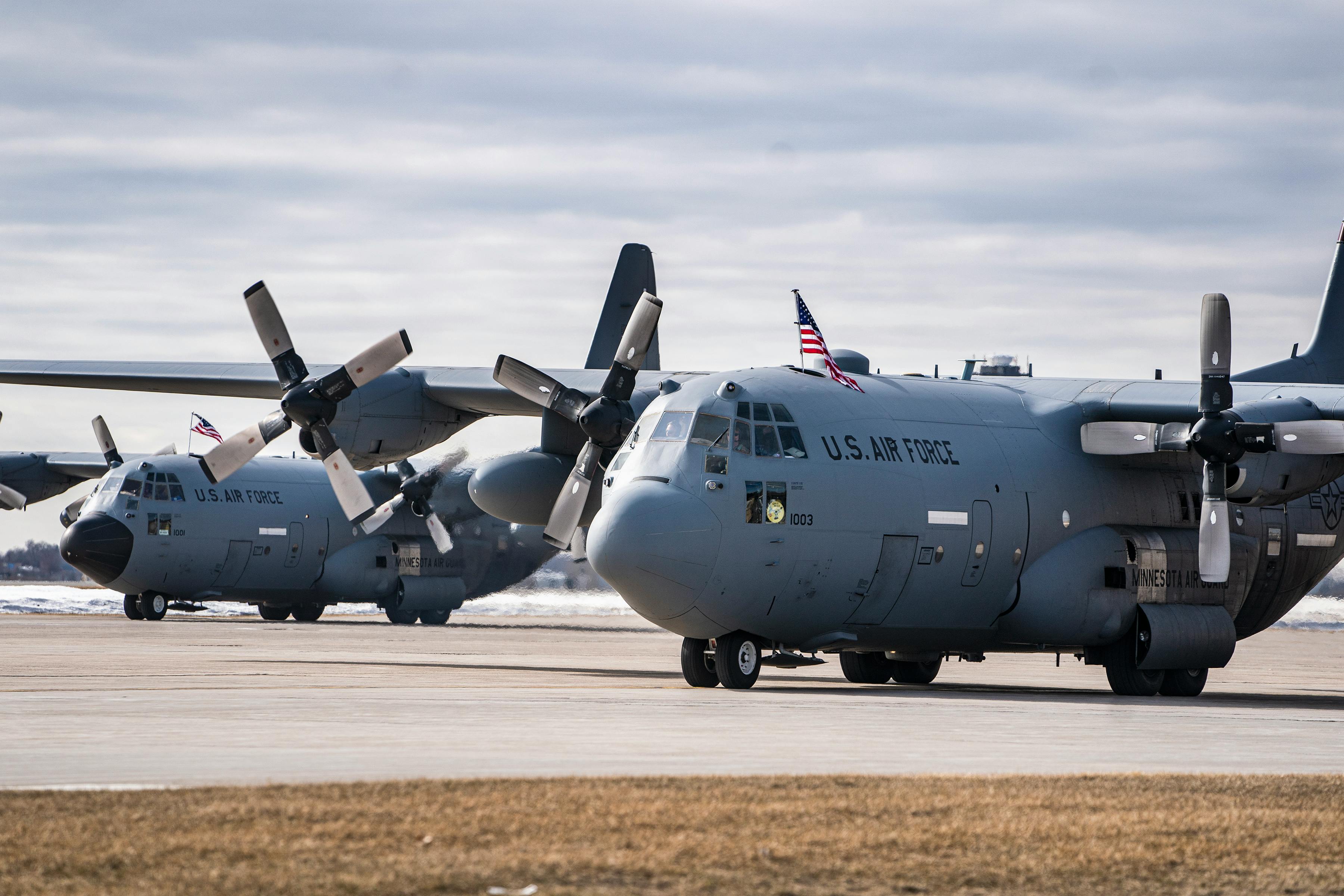Listen and subscribe to our podcast: Via Apple Podcasts | Spotify | Stitcher
For as long as Mike Menner has lived in his home in south Minneapolis, he's wondered about the planes overhead.
Not the passenger jets. He knows all about Delta and American, Southwest and United. Part of living in this neighborhood is pausing patio conversations when their engines roar overhead. "It's like hold music in my mind," he said.
The aircraft that had the 54-year-old seeking answers from Curious Minnesota, the Star Tribune's community reporting project fueled by readers' curiosity about our state, were the hulking military cargo planes that make frequent passes over the Twin Cities.
"Where are they going all the time?" Menner wondered. "Why do they always fly in pairs?"
Those giant C-130s are from the 109th Airlift Squadron, a unit of the Minnesota Air National Guard's 133rd Airlift Wing, and the 96th Airlift Squadron of the Air Force Reserves' 934th Airlift Wing. Both are located next to Minneapolis-St. Paul International Airport.
You know a C-130 when you see one: The four-engine planes have rotund bodies and four propellers, and they fly much slower than passenger jets.
What Menner sees over his house are the frequent training missions these aircraft fly. It's typically two aircraft at a time, flying in formation, although sometimes they fly more of them simultaneously — occasionally as many as eight at one time, though that clogs up the airspace.
The National Guard training missions aren't on regular schedules. But it's typically four days a week, with two or three aircraft on a morning mission and two or three aircraft on a night mission.
The two units have 16 of these rumbling C-130 cargo planes. They are versatile aircraft that can take off or land anywhere where there is an airstrip 3,000 feet or longer, whether that's a proper airstrip, a dirt airstrip, or something in a bombed-out war zone.
The aircraft deploy overseas for federal missions, where they transport troops and equipment in war zones and at other U.S. bases. State missions include disaster response where they can fly in supplies or personnel.
"The C-130 is one of the last aircraft you can really fly, going to dirt strips, flying in formation, just a lot of fun," said Lt. Col. Dana Novinskie, a C-130 pilot who is commander of the 109th. Other aircraft, like the passenger jets many of the 109th Airlift Squadron pilots also fly in their day jobs, are much more automated than C-130s.
The destinations of the National Guard training missions vary. On local training missions, the squadrons' four dozen pilots can brush up on takeoff and landing skills, as well as practice flying in formation. "We call that flying around the flagpole," Novinskie said.
The planes frequently perform training missions to Camp Ripley in Little Falls or Fort McCoy in Wisconsin, where they practice dropping off supplies in drop zones.
In those instances, the people who coordinate cargo and passenger loads, known as loadmasters, drop container delivery systems in the target area. The loads are typically four 50-gallon drums filled with water, affixed to a metal pallet and attached to a parachute.
That simulates dropping heavy equipment, a common task during deployments. Other times, they'll just chuck 25-pound sandbags on parachutes out the back, aiming for the drop zone.
"Those are a little harder to find in the tall grass," Novinskie said.
A complaint the National Guard squadron sometimes gets is that their aircraft fly too low. For some reason, Novinskie said, complaints generally say the aircraft were flying just 50 feet over people's houses. That's never true. Sometimes the planes will fly at 300 feet, but that's only Up North in unpopulated areas.
"I promise you we don't fly at 50 feet," Novinskie said. "I don't know why 50 feet is people's default [in complaints]. People don't know how low 50 feet really is."
If you'd like to submit a Curious Minnesota question, fill out the form below:
Read more Curious Minnesota stories:
From bankrupt racetrack to aviation hub — what remains from MSP Airport's early days?
Was Minnesota home to nuclear missiles during the Cold War?
What happens to all the de-icing solution used at MSP airport?
Why does Minnesota test tornado sirens on the first Wednesday of the month?
Are motorcycles allowed to be louder than cars in Minnesota?
Did Ford make millions of windows from sand mined beneath its plant?






